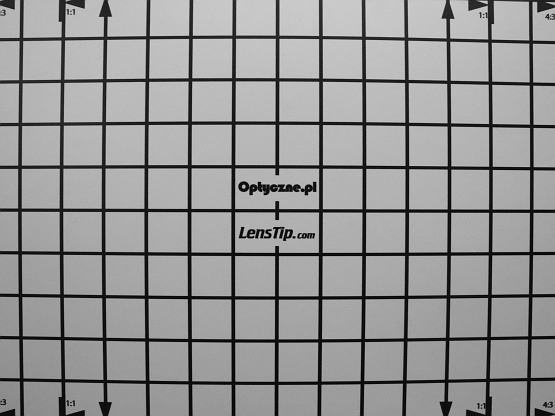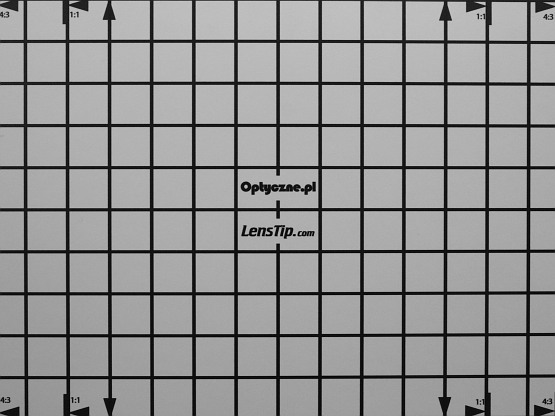Olympus Zuiko Digital ED 14-35 mm f/2.0 SWD
6. Distortion
Please Support UsIf you enjoy our reviews and articles, and you want us to continue our work please, support our website by donating through PayPal. The funds are going to be used for paying our editorial team, renting servers, and equipping our testing studio; only that way we will be able to continue providing you interesting content for free. |
- - - - - - - - - - - - - - - - - - - - - - - - - - - - - - - - - - - - - - - - - - - - - - - -
In the case of the 4/3 system the distortion is always an interesting issue. A small sensor demands using very short focal lengths and it might always be a potential source of problems with the correction of that aberration. How does the Olympus Zuiko Digital ED 14–35 mm f/2.0 SWD fare here? At the shortest focal length we noticed barrel distortion of –2.52%. This value is noticeable but not especially bothersome. In the middle of the range the distortion decreases to –0.41% and to –0.01% at the maximum focal length. The Olympus shouldn’t be ashamed of such a performance, especially compared to its full frame competitors. In fact the only difference is the sign of the distortion. For the Olympus it is barrel in the whole focal lengths range . For the lenses of 24-70 or 28-70 mm class we deal with barrel distortion at the wide end which becomes quickly zero with the increase of the focal length and is pincushion for the middle and the end of the range.
| Olympus E-3, 14 mm | |||

|
|||
| Olympus E-3, 24 mm | |||

|
|||
| Olympus E-3, 35 mm | |||

|
|||






